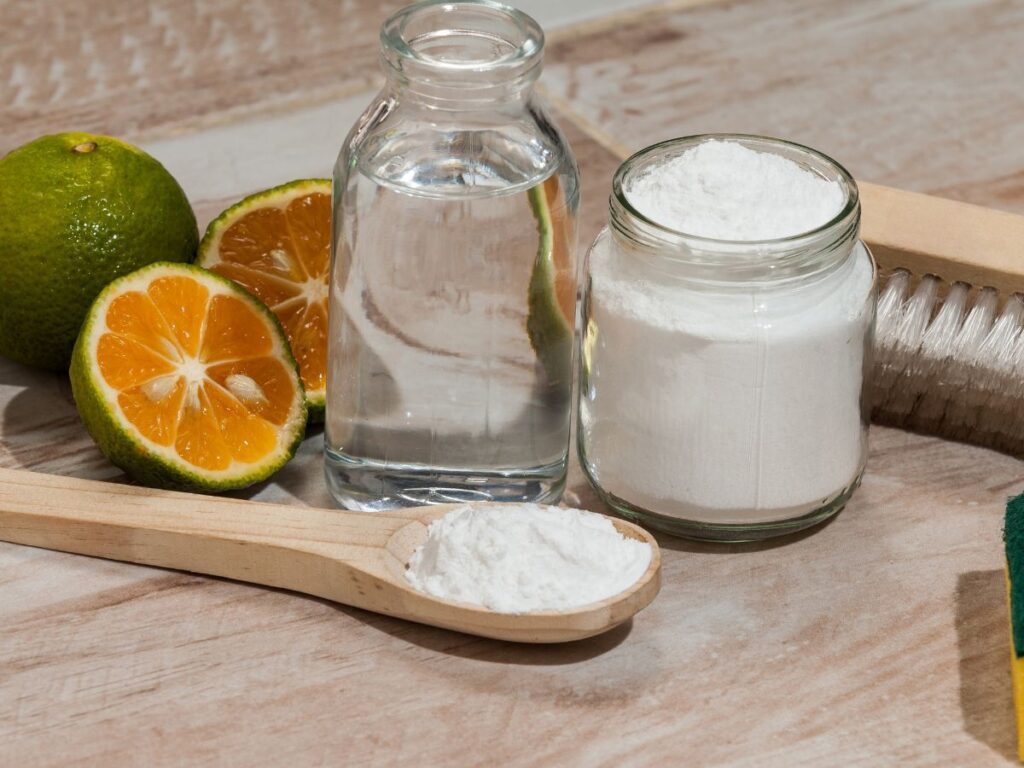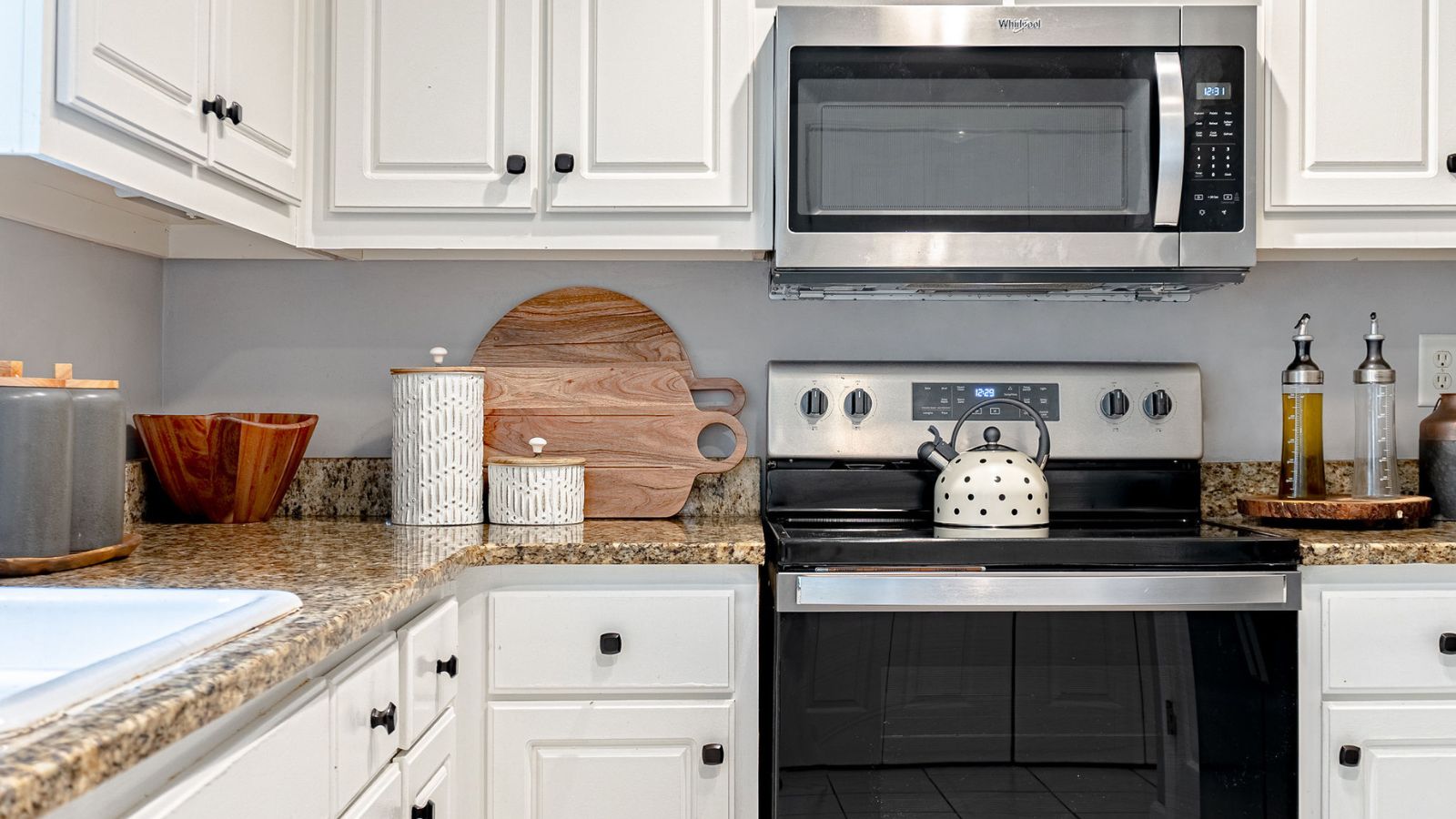This post may contain affiliate links.
It’s officially gnats and fruit flies season. It is the season when those annoying little pests buzz around your home with no care in the world. They show up when you least expect them, wreaking havoc on your personal space. The little creatures buzz around your eyes, nose, and ears, quietly disturbing your peace.
While often harmless, gnats and fruit flies can be an absolute nuisance in the household.
But the good news is, there are a number of ways that you can get rid of gnats without the need for a professional exterminator.
Follow along as I share my top tips for getting rid of those pesky gnats and fruit flies in your home, along with a few ways to keep them from returning. Let’s get into it.

What are gnats?
I think it’s important to understand what a gnat is to treat it best.
Trey from Northwest Exterminating reveals that “there are several species of gnats, but the most common one seen in a household are fungus gnats which tend to gravitate towards house plants, especially ones that may not be in good health or have soil that has been overwatered. On the other hand, fruit flies prefer rotting fruit and vegetables over moldy soil. It is much easier to tell a fungus gnat vs fruit flies based on where you see them.”
Gnats are small, flying insects. They are slightly smaller than a fly and even smaller than a mosquito. Some people refer to them as fruit flies and drain flies, which are also a type of gnat.
Gnats are commonly found in areas with moisture and decaying organic matter, such as kitchens, gardens, and garbage bins. They tend to be attracted to ripe and fermented fruits, vegetables, and moist environments.
They are also attracted to standing water, such as in sinks and drains. And if you have any of these things, you will likely attract gnats and fruit flies in your home – which could lead to a gnat infestation. These conditions provide the perfect conditions for gnats and fruit flies to thrive.
Five Ways to Get Rid of Gnats
Method 1 – Apple Cider Vinegar Trap
The apple cider vinegar trap is a surefire way to get rid of gnats and fruit flies if you have a gnat problem. Here’s how it’s done.
Step 1 – Fill a cup or small bowl with 2-4 tablespoons of apple cider vinegar and a few drops of dish soap.
Step 2 – Place the cup or bowl where the gnats are commonly present. This could be on the kitchen counter, near the kitchen sink drains, the garbage, or household plants.
The gnats will immediately be attracted to the gnat’s homemade trap, and once they try to take some of the vinegar mixture, it will immediately trap the gnats inside and get rid of them.
This is one of the best home remedies and the best way to kill fruit flies.

Method 2 – Red Wine Solution
Like the apple vinegar trap, red wine is an effective way of trapping gnats.
- Step 1 – First, fill a small bowl with red wine and add a few drops of liquid dish soap.
- Step 2 – Place the bowl around the house in areas where gnats are commonly present.
Once again, the gnats will try to take to the wine solution, get nabbed in, and eventually drown in the solution.

Method 3 – Peppermint Essential Oil
Peppermint essential oil can repel gnats. They are known for being natural insect repellents. Essential oils are great gnat repellents. It is a natural way to get rid of gnats instead of using exterminator chemicals.
- Step 1 – Mix a few drops of the essential oil with a cup of water and place in a spray bottle.
- Step 2 – Spray the essential oil solution around your home.
This gnats spray is more effective for households with a few gnats present and no sign of infestation. The gnats will usually stay far away from the sprayed area because the strong scents are too powerful for them to manage.
While peppermint is the most effective type of essential oil, you can also substitute eucalyptus oil, citronella, lavender, and rosemary to create a great home remedy.
Lastly, if your goal is to kill the gnats and not repel them, then essential oils may not be the path to take.

Method 4 – Flush the Drain with Baking Soda and Vinegar
If you notice the presence of gnats or drain flies around your sink area or near the drain, baking soda, and vinegar is the best solution to get rid of them. Sinks and drains can be a potential breeding ground for gnats, so it is important to treat the source.
- Step 1 – Start by pouring a cup of vinegar and baking soda down the sink drain. The mixture will bubble up a bit, exterminating the gnats in the drain.
- Step 2 – Leave the mixture for about 15 minutes.
- Step 3 – Pour boiling water down the drain to eliminate any organic matter buildup that may attract the gnats.
This should eliminate the gnats down the sink drains.

Method 5 – Use a Sticky Gnat Trap
You can use sticky traps to get rid of gnats. All you have to do is purchase a sticky gnat trap and set it around your home to catch gnats. This gnat trap is safe and non-toxic and can be disposed of once full.
How to Keep the Gnats and Fruit Flies Away
Preventing gnats from entering your home is the best way to eliminate them. Here are some preventative measures you can take:
- Empty your trash regularly – Keep your trash bin clean and take it out regularly. Gnats are attracted to moisture and strong smells, which are common in trash cans. Removing your garbage cans regularly from inside the home will reduce the presence of gnats and fruit flies.
- Clean your garbage disposal – Regularly cleaning of your garbage disposal helps keep the gnats at bay.
- Put fruits and vegetables in the refrigerator – Placing ripe fruits and vegetables in the refrigerator will limit the presence of gnats. This may not be ideal for some fruits as refrigeration may alter the taste and texture of the fruit.
- Immediately dispose of food waste – You must remove and dispose of rotten fruit or vegetables. Gnats can quickly multiply and become a nuisance if you have ripe fruits and vegetables like an overripe banana or grape lying around.
- Clean up any spills or messes – clean up any spills and food messes as soon as they occur.
- Keep your food sealed – Keep your food in sealed containers to prevent gnats from getting in.
- Limit overwatering of plants – overwatering your plants can attract gnats. Gnats are attracted to moist areas and excess water, which is common in overwatered plants. Make sure your plant pots have proper drainage to limit water from settling in the pots.
- Fix any leaks – Gnats are attracted to stagnant water, so make sure to fix any leaks in your home, including in sinks and drain pipes.
- Wash dirty dishes – wash any dirty dishes, pots, and pans, as gnats are attracted to soiled items.
- Use screens – Install screens on your windows and doors to prevent gnats and fruit flies from entering your home.
- Wipe down surfaces – Regularly wipe down your countertops, tables, and other surfaces to eliminate traces of spilled liquids or food particles. Sweep and mop the floors frequently, paying particular attention to corners and under appliances where crumbs may accumulate.
Where do gnats come from? Why do I have gnats in my kitchen?
Gnats can come from several places. Here are a few places where gnats can surface.
- From the outside of the house – Many gnats, such as fungus gnats and black gnats, have outdoor habitats. They can breed in areas with damp soil, decaying vegetation, or bodies of water like ponds, marshes, or streams. Gnats and fruit flies may emerge from these outdoor breeding sites and enter homes or other indoor spaces through an open window or open doors.
- The sink or drain – Gnats, like drain flies, thrive in indoor environments with poor drainage or excess moisture. They can breed in drains, sewage systems, or other damp areas. You will notice their presence around your sink, bathtub, or shower drain.
- Overripe fruits and vegetables – Gnats, especially fruit flies, are attracted to ripe decaying fruits and vegetables. They can lay their eggs on the surface of these items, and the larvae will develop within the decaying matter. This is oftentimes why you have fruit flies in your kitchen.
- Indoor plants and moist soil – Gnats can emerge from overwatered potted plants. Overly moist and wet soil in indoor plant pots can provide an ideal breeding ground for gnats. You will typically notice them flying around the plants or windows near the infested plants.
- Other areas where you will notice gnats are near compost bins.
Will gnats and fruit flies go away on their own?
The short answer is it depends. For gnats and fruit flies to go away independently depends on the environmental conditions, food source, gnat activity, and conditions within your home.
Gnats may go away on their own if their breeding sources are eliminated or environmental conditions become unfavorable for survival.
However, waiting for gnats and fruit flies to disappear on their own is not always a reliable solution, especially if ongoing breeding sites or attractants exist.
You may want to be proactive by controlling their presence with DIY traps as soon as you see them. This includes identifying and removing breeding sources, improving drainage, maintaining cleanliness, and using traps or insecticides if necessary.
I hope you have found this article helpful. Practicing good sanitation and eliminating potential breeding sites can help reduce their presence. Regularly disposing of overripe fruit or vegetable, maintaining proper drainage, and managing indoor plant care can help prevent gnat infestations.
Implementing some of the methods described above can significantly reduce their presence and prevent future infestations.
Ultimately, if all else fails and you have an infestation with large numbers of gnats, it may be time to bring in an exterminator or professional pest control company if the infestation persists or becomes uncontrollable.
Posts you might like:
- Ways to Get Rid of Smell in Garbage Disposal
- How to Clean Shower Doors with Vinegar
- How to Clean Mold in Shower
- How to Clean a Porcelain Kitchen Sink
Please comment below to let me know what you think of this article. Feel free also to follow me on my social media pages – Pinterest and Instagram or subscribe to my mailing list for other design inspiration, DIY projects, and home decor ideas.
Tamara White is the creator and founder of The Thrifty Apartment, a home decor and DIY blog that focuses on affordable and budget-friendly home decorating ideas and projects. Tamara documents her home improvement journey, love of thrifting, tips for space optimization, and creating beautiful spaces.





